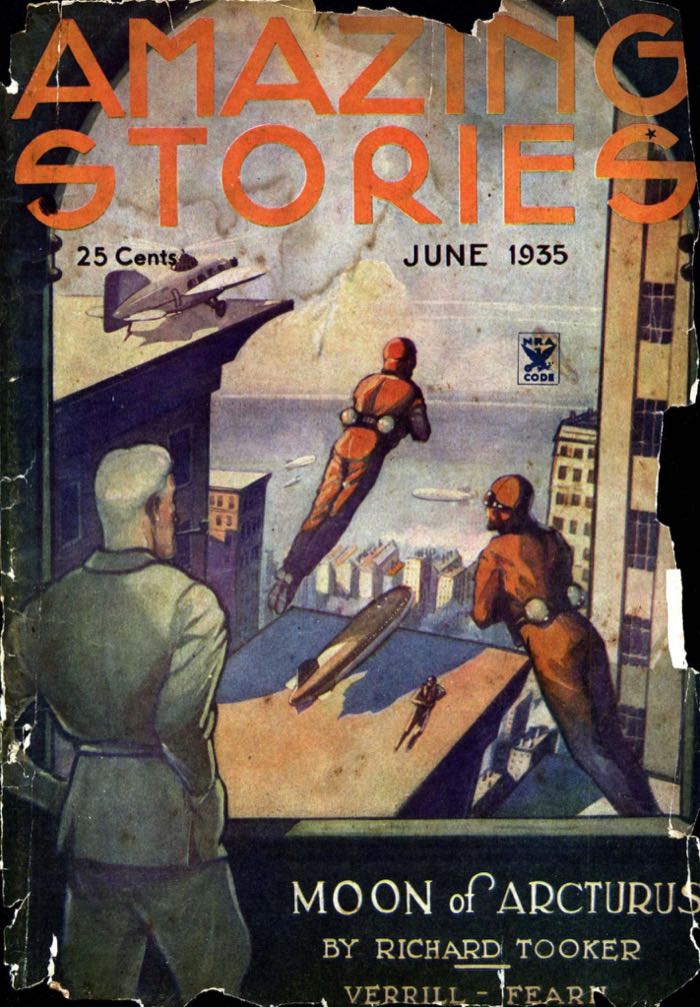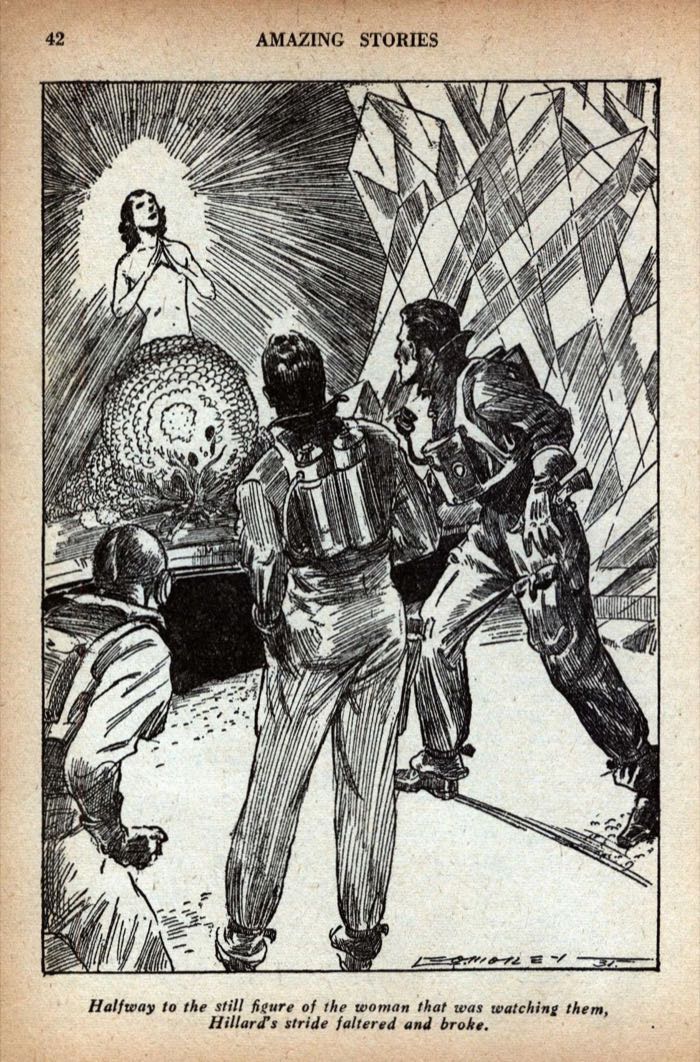Moon of Arcturus
Reviewed date: 2022 Dec 27
27 pages
The publication
Moon of Arcturus was published in the June 1935 issue of Amazing Stories and has never been reprinted. That's probably fine. I read it because I'm reading every science fiction story with the word Arcturus in the title, but my recommendation is that you can skip this one. If you choose to ignore my advice you can read it online at the Internet Archive: Amazing Stories, June 1935 (page 41)
The setting
In the year 14970 mankind is living in the Miracle Age. Space travel is commonplace but still fraught with danger. Life is chock full of fantastic inventions like videoconferencing, personal antigravity belts, and gland replacements for limitless lifespan and eternal youth. Eugenics have resulted in two classes of humans: the high-status artates are served by the compurions who have been bred for logic and calculating ability. The compurions lack proper human emotions like love.
The characters
Commissioner Brest Frontenac's daughter Alois was lost in space when Bridge of the Abyss was hit by a meteor near Venus. Ten years later she sends a distress signal from the Arcturus system. Her love interest Drake Hillard enlists the help of his nemesis Nard Devonack, a compurion technician who also desires Alois, to outfit a ship and rescue her. They take off in the Meteor III for the thirty-year journey to Arcturus.
The (bad) science
Even by 1935 standards this is rotten science. How does Alois, a passenger on a ship that crashed into a meteor near Venus, end up on a moon in the Arcturus solar system a mere ten years later? Here's the story's explanation:
As a passenger of the Bridge of the Abyss she was supplied with food tablets, space-bottle and rocket gun for surviving in space several months if necessary. Flung free of the wrecked ship, she might have been drawn into the gravitation of a meteor headed into the abyss toward Arcturus. That she reached the star system in little more than ten years may be explained by assuming that she already was on the outer edge of the gravitational field of the Terran sun-star.
Uh, no. Even with 1935 science, no.
Furthermore, Alois drifted to Arcturus and sent a message back in ten years, but Hillard and Devonack on Meteor III take thirty years to reach her? This isn't even internally consistent to the story.
And why is a spacesuit consistently referred to as a space-bottle? That's bizarre.
A product of its time
(which is the 1930s)
The eugenics which produced the artates and compurions is casually presumed to be a good thing, which was more acceptable in 1935 than it is today. The author doesn't do a good job of selling it as a good thing (unlike, say, how E. E. "Doc" Smith explained the breeding program in his Lensman series) but it's just presumed to be fine.
I found it interesting that the high-class artates are portrayed as being supreme athletes, whereas the evil and low-class compurions are super-intelligent scientists and technicians. Devonack himself, in trying to make himself seem better than his fellow compurions and a real competitor for Alois's affections, states "I have the brain of the compurion with the brawn of the artate." (The brawn being a mark of superiority.)
So the high-class artate is characterized by a physically perfect body whereas the low-class compurion is merely an intellectual genius, a "wizard scientist." In 1935 this may have made more sense, but today we tend to presume that the intellectual man is superior to the athlete.
It goes further. The story plays up the cold, selfish, and evil intellectualism that comes from being a super-scientist. Devonack is a true villain. As he works, he thinks to himself: "Out there beyond the farthest Terran man had ever ventured, he would win the woman he desired and obtain a sweet revenge on his confident rival. The woman was not worth it — revenge was not worth it, but the enormous selfishness of his ego demanded it. To satisfy himself he would win the world and destroy it to-morrow in an evil whim."
Yikes! This Devonack reminds me of Dr. Marc C. DuQuesne from Doc Smith's Skylark series.
And then there's the casual racism when attempting to be not-racist. Here's the description of the diversity in the Miracle Age:
High-speed transportation had accounted for unusual contacts between the races of mankind, and few were pure of blood in so far as nationality and color were concerned. A potentate of Algiers rubbed shoulders nonchalantly with a mayor of a large eastern city of the North American continent. Pergansyds from Venus, with their four legs and spider heads, gazed idiotically at the sky, beside gigantic negroes from the heart of Africa; the dog-men of Mars lurked at the edges of the crowd, aloof and morose in their attitude toward all the Terrans and their scientific projects.
In the future humanity is one big melting pot, but this was written in 1935 so of course "gigantic negroes" are as alien as literal four-legged aliens from Venus.
*sigh*
The denouement
Hillard, Devonack, and the crew of Meteor III arrive at Arcturus and locate the moon where Alois is stranded. They land and find the place populated by a race of shape-shifting brain-women who have taken to assuming Alois Frontenac's form as a sort of fashion. They find the real Alois. Devonack tries to kill the brain-women, but they turn him to stone. The brain-women marry the crew of Meteor III and they all wait in paradise for the arrival of a refueling ship to take them back to Earth.
Because (*sigh*) the Meteor III--which set out on a rescue mission, remember--has neglected to load enough fuel for a return trip.
I just don't know what to say.
The verdict
This one is so bad it's almost good.

